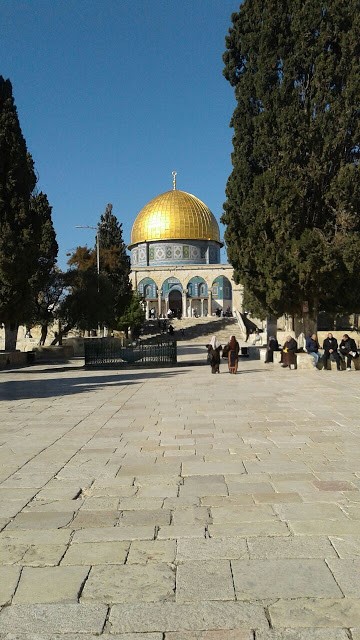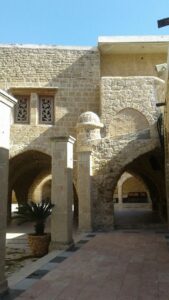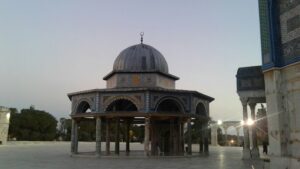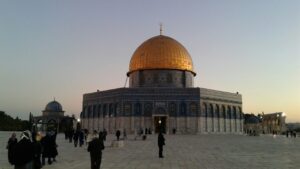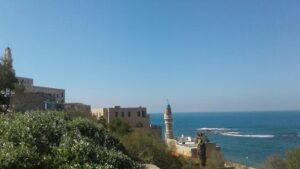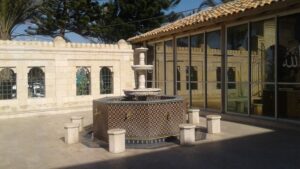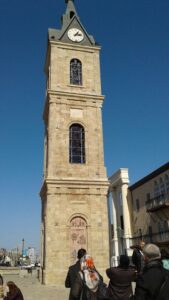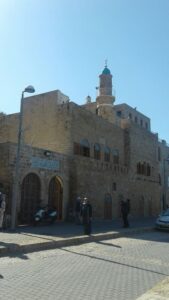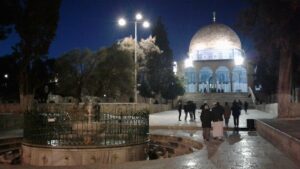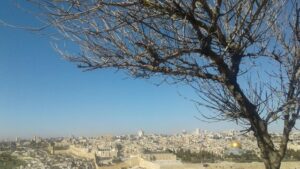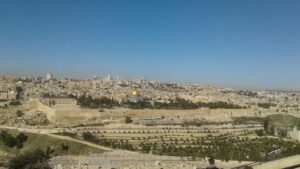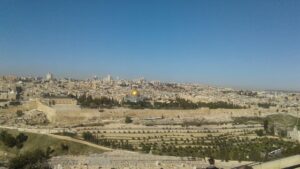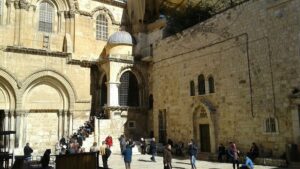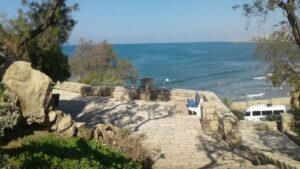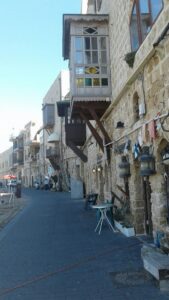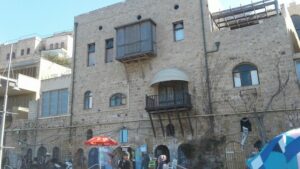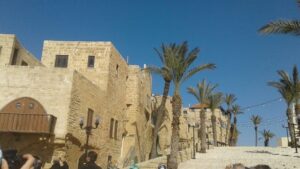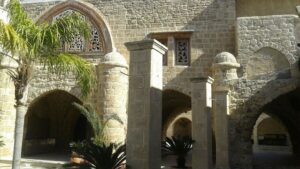The country, which still resonates with the name Palestine in Muslim hearts, but is under Israeli occupation, is divided into three parts: Israel with an 85% Israeli population (the place where Palestinians live is called the West Side ), Palestine and Gaza (Walled and neither Israel nor (Official) Palestine. (There is no entry permit for sightseeing purposes, only politicians and special permits can enter there. However, when the Refah Gate on the Egyptian border is opened for 3 days every month, aid, students and those in urgent need of health are allowed to pass).
JAFFA
Our first mansion in Palestine is the historical port city of Jaffa. It is also referred to as the 48 Lands by the Jews since they first settled here in 1948. 85% of the population is Israeli. Of course, this population ratio did not happen naturally: Since the invasion began, most of the Palestinians have been exiled from the city and the rest have become a minority in the “State of Israel”. The city of Telaviv, which is today Israel’s official capital , is the name given to the modern part of this city of Jaffa outside the city walls.
The city of Jaffa is a city where the Ottoman Empire did not hesitate to sign its name on Palestinian lands. Developing an architectural style according to the unique conditions of each region, the Ottomans preferred stone structures for Palestine and brought an earthly paradise that promises splendor and peace to the soul in Jaffa. The city of Jaffa, which was established on the shore of one of the oldest ports in the world , served as a commercial city in the Ottoman period as well, and became one of the vital sources of the imperial economy, including the small amount of taxes collected from the Christians who came to the Church of Resurrection for pilgrimage. But unfortunately, this heavenly city, after the weakening of the Ottoman Empire, shared the same fate with the other heavens of the empire, that is, maybe it was left without a protector. It was persecuted by the British, the most looting community ever seen in human history . As soon as the British set foot on these lands, they determined to erase the traces of the Ottoman Empire from the city and began to demolish it. However, Ottomanism, which clings to the soil of Jaffa with solid roots despite so many cuttings and pruning, has permeated the city and has always remained green. While walking through the streets of the city, it is quite normal to come across historical mosques where Armenian families are settled (eg, the Tâbîi Mosque), restaurants with alcoholic drinks next to mosques, and bars that increase the volume and dose of entertainment during the adhan hours.
Mahmudiye Mosque, the most important of the Ottoman works that gave color to the city . This mosque, which was started to be built by Mahmud II and completed in 1812, is the largest mosque in the city. It is also the meeting point of the Palestinian people and the Friday mosque. Although there are other mosques in the city, only Friday is allowed in this mosque. The mosque was built in the form of a kulliye, and a sundial, which is still in use today, was placed in its courtyard. The barracks and the court were deemed appropriate as adjacent to the mosque. Shops were donated around it to cover the expenses of the barracks, court and mosque trio. Although the complex is surrounded by bars today, it is used for its purpose inside, but it was not as fortunate as the barracks and the court mosque. The barracks is getting ready to be a hotel these days; the court is assigned to municipal services by Israel.
A little further on, in the modern city of Telaviv , another Ottoman artifact greets you among the skyscrapers. Hasan Bey Mosque is the last work of the Ottoman Empire built in Palestine. This mosque, the construction of which was completed in 1914, was tried to be converted into a restaurant by offering large sums of money, but it was not successful. In recent years, it has been exposed to intimidation attempts and attacks. When faced with the danger of being without a community, that is, confiscated because there are no local Muslims around, the volunteer mosque guards try to withdraw the congregation with tea and coffee. Muslim people come with their cars and show their body (existence) under the pretext of tea and coffee.
As for Tel Aviv … Israel, with its unassuming worldview , destroyed dozens of historical monuments and built a fully-fledged city with skyscrapers of a kind that can be seen in any modern city of the world and without any architectural features, and named it “Spring Hill”. These skyscraper hills claim to be the center of the world’s economy and are directly or indirectly profit partners of every international investment. And there is no doubt that when the State of Zion is fully established, the cradle of the global economy will pose a great danger to America as a serious competitor and is perhaps now preparing the end of America.
JERUSALEM
Our route after Jaffa is Jerusalem, the cradle of the holy… Jerusalem is the common value of Jews, Christians and even Muslims. For Jews, Jerusalem is the point where God began to create the universe. For Christians, it is the center of resurrection. In the eyes of Muslims, Jerusalem is the witness of the ascension. Above all, the heaven on earth, where the heavens are closest to the earth, for all three monotheistic religions…
Throughout its history, Jerusalem has seen dozens of conflicts and has hosted dozens of heroes and prophets in its bosom. The Kidron Valley (also known as the Valley of Hell), located within the borders of Jerusalem today, is full of tombs of prophets and saints. The pride of the Jews is King David, the Prophet. which was the capital of David’s world domination; Solomon built the blessed temple by ruling both jinn and humans; Hz. that Yahya was sacrificed by incorrigible souls; Hz. Jerusalem is the city where Jesus was taken to heaven. However, Hz. It is the home of Mary, Jacob and even Isaac and his offspring. This city, which was sanctified by the steps of blessed people, could envelop the soul with the fragrance of peace at every step. Unless man knew how to be content and wanted more of the world…
While the city is trying to preserve so many sacred things under its wings, each of them exhibits the traces left by the cruelty of the avid people who want to own it alone. From Babylonians to Romans; He was badly wounded in the clashes that broke out while he was passing from Muslims to Crusaders and back to Muslims . And it should be proud to say that it could only breathe during the times when Muslims ruled, and it could be shared between the members of the three major religions in an air free from tension. Today, Jerusalem is shedding tears of longing for the only nation that has surrendered its sanctity, that is, the Muslim Ummah, which has retreated into a corner.
Jerusalem by Muslims It was conquered during the caliphate of Omar and throughout the Muslim rule, Omar’s trust was decisive in the relationship between the Muslim rulers and the non-Muslim subjects of the city. Isn’t it that Omar, when he first entered the city, rejected the offer of the Christian clergyman who offered him to perform the prayer whose time had come, while he was in the Church of the Resurrection, out of fear that they would turn the church into a mosque after him. For this reason, perhaps the only square whose name did not change under Muslim, Crusader, British and even Jewish rule was Ömer b. Khattab Square.
Kubbetu’s-Sahara , which has become the symbol of Jerusalem and is located within the borders of Masjid al-Aqsa, was built with a golden dome during the Umayyad period. However, when it could not resist the time and suffered a lot of damage , it was renovated during the Fatimid period. The Fatimid emir preferred a lead dome instead of the golden dome, and the dome remained in this state until the British mandate rule. In 1924, Architect Kemaleddin from Turkey was invited by the Supreme Islamic Council to repair the Masjid al-Aqsa complex . The Turkish architect proposes that the dome be restored to its original state, that is, that it is covered with gold again, but this proposal is not accepted. It is not accepted, but this idea eventually becomes a part of the Jerusalem cause. That is to say, the King of Jordan and the King of Saud had a great deal of contention on this issue, and in the end, the King of Jordan, Hussein, ended the conflict by selling his personal villa in London and saying that he wanted to cover the expenses of the golden dome on his own behalf. As it can be understood, Jerusalem is a cosy beauty that every king strives to make his property, that a thousand people want, but only one brave man gets his share.
Just before the Seljuk Turks conquered Anatolia, they conquered Jerusalem with a victory against the Fatimids, and then went further south and conquered Palestine, and held the region from 1070 to 1098. During the reign of the Seljuks , many scholars such as Gazzali and Ibn Arabi visited the city, madrasas were built and religious and human sciences were taught there. Gazzali wrote part of his famous work, İhyau Ulumi’d-din, while he was teaching in one of these madrasahs. All in all, this short period has been quite fruitful.
City of the Crusaders when the hands were massacred Muslim and Jewish population in the city and established the Kingdom of Jerusalem in order to prevent the entry of the increase in the population is Christian, Muslim and Jewish Armenians, Copts, Nestorians et al. Christians settled in the city. When Salahaddin Eyyubi took the city from the Crusaders after a long siege in 1187, the city opened its doors to Muslims and Jews again. After the Ayyubids , the city was captured by the Mamluks in 1250, and in 1517 it was handed over to the Ottomans. remained under their control until surrendered. The Mamluks took steps to preserve the value of the city. Undoubtedly, the most important of these is the existing Aksa walls. Mamluks while people’s homes Masjid al-Aqsa they raise walls showing foresight in order to prevent them from entering into the boundaries and so they sharpen the Masjid-i Aksâ’n the border. Masjid al-Aqsa, Kubbetu’s-Sahra, is a very large area covering the Aqsa complex, including the Qibla Masjid, where the Prophet was the imam for other prophets.
And finally, when the city was reunited with Ottoman lands by Yavuz Sultan Selim in 1517, it found the peace it was longing for. The arrival of the Ottomans in the city brought a period of security and stability not only for Muslims but also for Jews and Christians. When the Ottomans took over the administration, the old city, which remained within the walls, was divided into four main regions. These are: Muslim quarter, Jewish quarter, Christian quarter and Armenian quarter.
For the Jews , who saw the Ottoman sovereignty as a blessing from the Lord, a period began when they did not feel themselves in exile. So much so that they approached the Zionists with suspicion until the city fell out of the hands of the Ottomans . The Jews took charge in the state levels under the Ottoman rule, and thus they rose from the level of exile to the level of subjects/population. If this situation is compared to the situation of the Jews living in Europe of the period, it is easier to understand what the Ottomans meant for the region.
Another group that benefited most from the Ottoman peace in Jerusalem was the Armenian Christians . Although they were the smallest congregation in Jerusalem, they both had special rights in the Church of the Resurrection and a neighborhood of their own in the old city. However, when you go to the Armenian quarter today, you are greeted with an understanding that is far from Ottoman peace. Along the walls of the neighborhood, a map showing Anatolia as Armenia and southeast as Kurdistan accompanies us and, of course, genocide avengers… A similar map also adorned the walls of an Armenian church in Jaffa.
This attitude of Armenian Christians towards the Ottomans is unique to them and is not valid for other Christians. So many Christian denominations live in Jerusalem. And Hz. The Church of the Resurrection, which Ömer refrained from praying because he wanted it to remain a church, is one of the rare common values for all Christians. This is St. It is one of the important pilgrimage points for all Christians, as it is believed that Jesus’ tomb is located and will be resurrected here. And the keys to the church have been in two separate Muslim families since the Ottoman period. Members of Muslim families come every morning to open the doors and close them at night. This is the solution that the Ottomans found in response to a crisis that emerged in the race for merit among the different Christian sects of the Ottoman Empire. And the fact that this practice is currently in force must be an indication that there is no discomfort from remaining Ottoman. The fact that the religious officials of the church continue to wear the fez also supports this behavior.
In the Kidron Valley outside the city walls, Hz. There is the Church of the Virgin Mary , which is believed to contain the tomb of the Virgin Mary . This building, which served as a church during the week during the Ottoman period, was used as a mosque on Fridays. Inside the church, the mihrab that signifies those days is still in place. This application, which sounds interesting, was not found strange by either Muslims or Christians in Ottoman Jerusalem.
If we go back inside the wall to Kubbetu’s-Sahra ; The carpets of the mosque are sent from Turkey. It was based on a dream in which Abdulhamid saw the Dome of the Rock. After this dream, Fatimatu’z-Zehra had the mihrab built in the masjid, and he also procured the masjid’s carpets from his personal treasury.
Jerusalem is today the unofficial de facto capital of Israel. All administrative bodies such as the parliament and ministries are located in this city. The Israeli government is opening the city for settlement in order to make room for all the Jews in the world by running its waters under straw, as if to attract the attention of the whole world. Jewish families earn thousands of dollars a month. It is also clear that the country does not have the economic potential to provide this much income to every Jewish family. But still, it is obvious to ask how all this income flows into the country. Before and after the 2nd World War, the Jews who had no place to go after the attacks against them, or rather “no place to go”, were condemned to this country, which had no other attraction than to host the holy, and were tied here with such attractive incomes. However, these high incomes cannot stay in their hands. Because life is very expensive and even television is taxed.
Jewish clergy are exempt from military service and taxes. They were given the task of continuing the generation by multiplying and 8-9 children were expected from them. However, non-religious Jews are quite uncomfortable with this privilege granted to them. Because this situation requires women to be under military obligation due to the low population and prolonging their military service period. However, this group preferred to have cats and dogs instead of giving birth to children.
The Jews, who sighed and looked at the Aksa Square, where the former Suleiman Temple was located, from the Mount of Olives until the reign of Suleiman the Magnificent , performed their prayers on the wall, which is called the Burak Wall by the Muslims and the Wailing Wall by the Jews, and is a part of the Aksa complex, due to some turmoil in the reign of Sultan Suleiman. permission granted. Since that day, the Jews, facing this wall, are weeping for their former glory and world-wide domination they lost. In other words, they support and inspire the Israeli government with their prayers.
Religious Jews walk briskly and reluctantly to meet people’s eyes. I think this fast walk is inherited from his diaspora Jew ancestors. It is as if this behavior, which their ancestors had to adopt throughout history, was ingrained in their genes through a habit from generation to generation. However, this fear does not seem to be a thing of the past despite Israel’s occupying policies. Because some Jews are advising Israeli youth to obtain a second country citizenship because they believe that Israel’s dominance in this country has a short lifespan. In fact, all Jews do not approve of Israel’s occupation of this city with a Zionist motive, and they even go further and curse because they believe that they delayed the coming of the Messiah because they entered the land of Arz-ı Mevud before its time.
EL-HALIL/HEBRON
This city is densely populated by Muslims and is officially a part of Palestine. The general view of the city and its inhabitants breathes the feeling of a place that is fully occupied: it is deplorable… The people are poor and the children are not happy to beg. There is one of the common values of the three monotheistic religions in this city: Halilu’r-Rahman Masjid. Hz. The temple where the graves of Abraham’s son Isaac and grandson Jacob are located. The mosque was divided into two under Israeli occupation, and some of it was reserved for Jews. The Masjid is also remembered with the al-Khalil Massacre, in which an Israeli soldier murdered 30 Muslims in 1994. The mosque can be entered through Israeli police screening and passport control. This is quite insulting for a temple visitor.
In short, while visiting Palestine, one feels that Israel, which is presented to the world with the perception that it is a very powerful state and nation, does not quite confirm this claim. You walk around the city streets with the pride of being Turkish when you feel that the Jews, who are attached to these lands not with the feelings that make them homeland, but with the feeling of being condemned, are far from being the “nation” that makes a state a state. When you witness the Turkish flags hung on the walls of shops and houses despite the invaders, and the homesickness imposed on the crescents and stars inscribed on mosques, you see that this pride is not unfounded.

